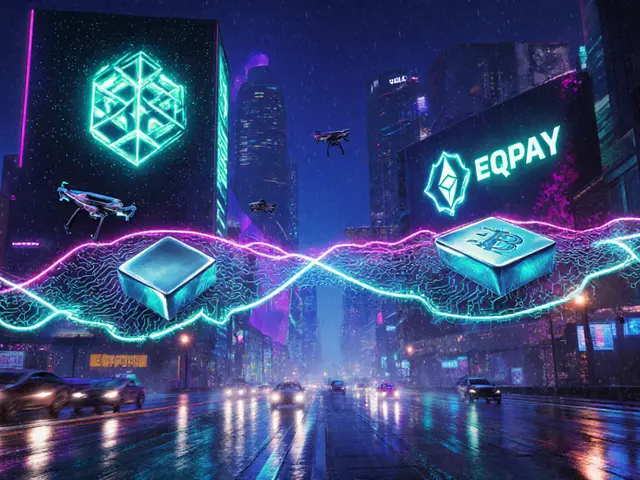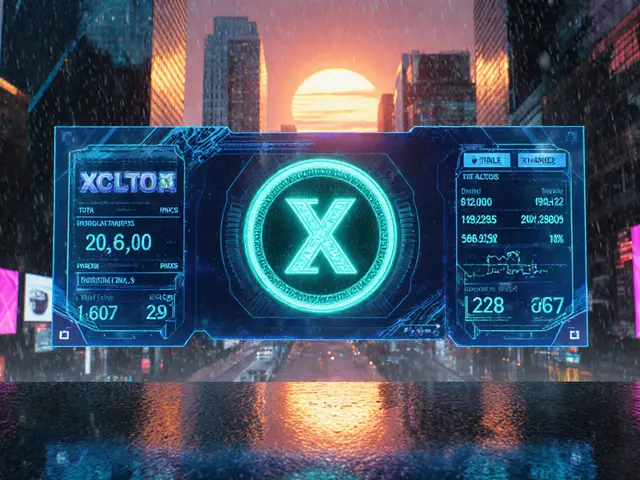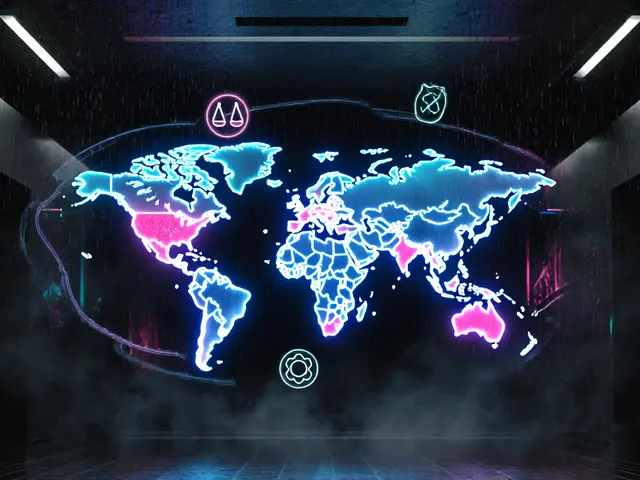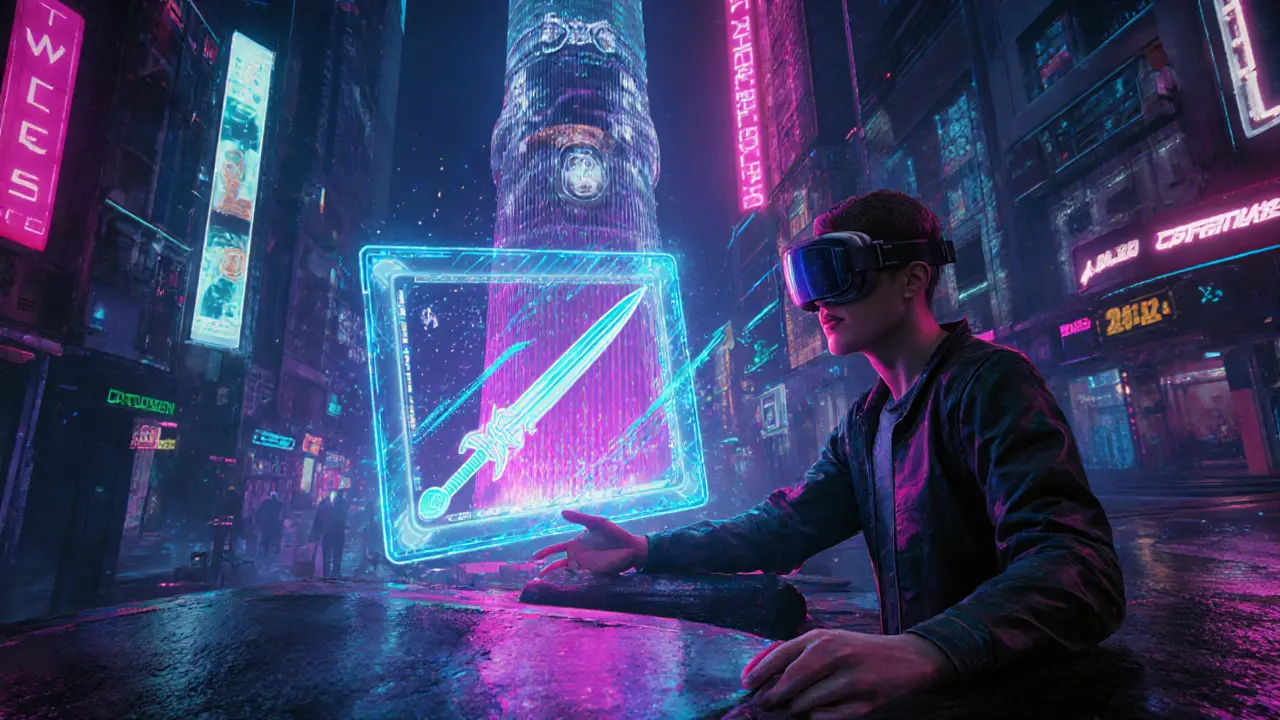NFT Gaming: The New Frontier of Play‑to‑Earn
When exploring NFT gaming, a blend of non‑fungible tokens and interactive video games that lets players truly own in‑game assets. Also known as play‑to‑earn gaming, it relies on blockchain, a decentralized ledger that records token ownership securely and often lives inside a metaverse, a shared virtual space where digital economies thrive. This mix creates real‑world value from virtual actions.
Why NFT gaming matters right now
NFT gaming is more than a buzzword; it’s a practical way for developers to monetize content and for gamers to earn crypto tokens. The core idea is simple: game items become NFTs, so each sword, skin, or land parcel is a unique token you can buy, sell, or trade on open markets. That means crypto tokens, fungible coins used for in‑game purchases and rewards act as the bloodstream of the ecosystem. When you complete a quest, you might earn a token that you can instantly swap for other assets, turning playtime into real income.
The first semantic triple: NFT gaming encompasses play‑to‑earn mechanics. The second: NFT gaming requires blockchain infrastructure. The third: Play‑to‑earn influences player retention. The fourth: Metaverse projects often integrate NFT gaming. The fifth: Crypto tokens fuel in‑game economies. These connections shape how developers design games and how players engage with them.
For newcomers, the biggest hurdle is understanding how ownership works. In traditional games, the studio controls every item; you can’t move it outside the platform. With NFTs, the token’s smart contract stores proof of ownership on the blockchain, so the item lives on your wallet, not the game’s server. This shift opens up secondary markets where rare items can fetch high prices, and it gives creators a royalty stream every time the item changes hands.
From a developer’s perspective, NFT gaming lowers the barrier to launching new titles. Smart‑contract platforms like Ethereum, Polygon, and Solana let you mint items quickly, and existing marketplaces provide ready‑made liquidity. Yet each chain has trade‑offs: Ethereum offers strong security but higher fees, while Polygon provides lower costs at the expense of decentralization. Choosing the right blockchain is a strategic decision that affects player experience and profitability.
Another related entity that pops up often is the concept of “gaming NFTs as collectibles.” Collectibles aren’t just decorative; they can boost gameplay by unlocking exclusive quests or enhancing character stats. This dual role blurs the line between utility and speculation, making the market both exciting and risky. Understanding tokenomics—how many items are minted, the distribution schedule, and the royalty percentages—is crucial before you invest or develop.
Community drives NFT gaming success. Games that foster strong Discord or Telegram groups see higher retention because players share tips on earning, trading, and battling. Moreover, community‑governed projects let token holders vote on game updates, balancing power between developers and players. This governance model ties back to the metaverse idea, where virtual worlds evolve through collective decision‑making.
Behind the scenes, security can’t be ignored. Smart‑contract bugs have led to millions of dollars in losses in the past year. Audits, bug bounties, and using battle‑tested libraries are best practices. For players, using hardware wallets and double‑checking contract addresses prevent phishing scams that mimic popular games.
Monetization isn’t limited to token sales. Many NFT games adopt “skin‑as‑a‑service” models, where players lease rare items for a period, generating recurring revenue. Others integrate DeFi features like staking: lock your game token to earn interest, then plunder it back into the game for bonuses. These hybrids illustrate how DeFi and gaming increasingly intertwine.
Regulatory outlook varies by region. Some countries treat NFTs as securities, which could affect how games launch token sales. Others, like Singapore, provide clear licensing pathways for blockchain‑based games. Keeping an eye on local laws helps developers avoid costly compliance missteps and gives players confidence that their assets are protected.
Cross‑chain interoperability is becoming a hot topic. Players want the freedom to move NFTs between Ethereum, Polygon, and Solana without losing value. Bridges and layer‑2 solutions are emerging to solve this, but they add another layer of risk that developers must manage.
From a design standpoint, user experience matters more than ever. If a wallet connection feels clunky, players bail. Simple onboarding flows, clear gas fee explanations, and one‑click claim buttons keep the fun alive and let the play‑to‑earn model shine.
Case studies like DeFi Kingdoms show how a hybrid exchange and RPG can attract both DeFi enthusiasts and gamers. Their JEWEL token, hero NFTs, and in‑game farms illustrate the full stack of NFT gaming mechanics in action.
Future trends point toward dynamic NFTs that evolve based on on‑chain activity, AI‑generated art that personalizes each item, and immersive VR metaverse lounges where players meet to trade. These advances could push NFT gaming from niche hobby to mainstream entertainment.
To sum up, NFT gaming sits at the crossroads of blockchain, metaverse, and crypto token economies. Whether you’re a gamer curious about earning, a developer scouting new revenue streams, or an investor seeking the next big trend, the space offers tangible ways to participate. Below you’ll find hand‑picked articles that break down everything from identity solutions for gamers to the latest airdrop opportunities, giving you the tools you need to navigate this fast‑moving arena.




